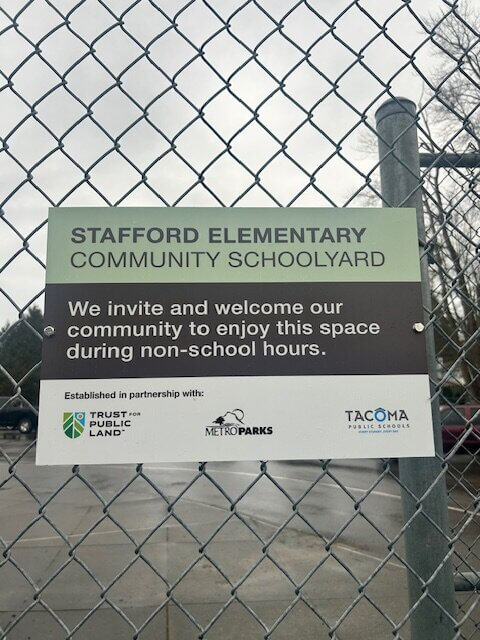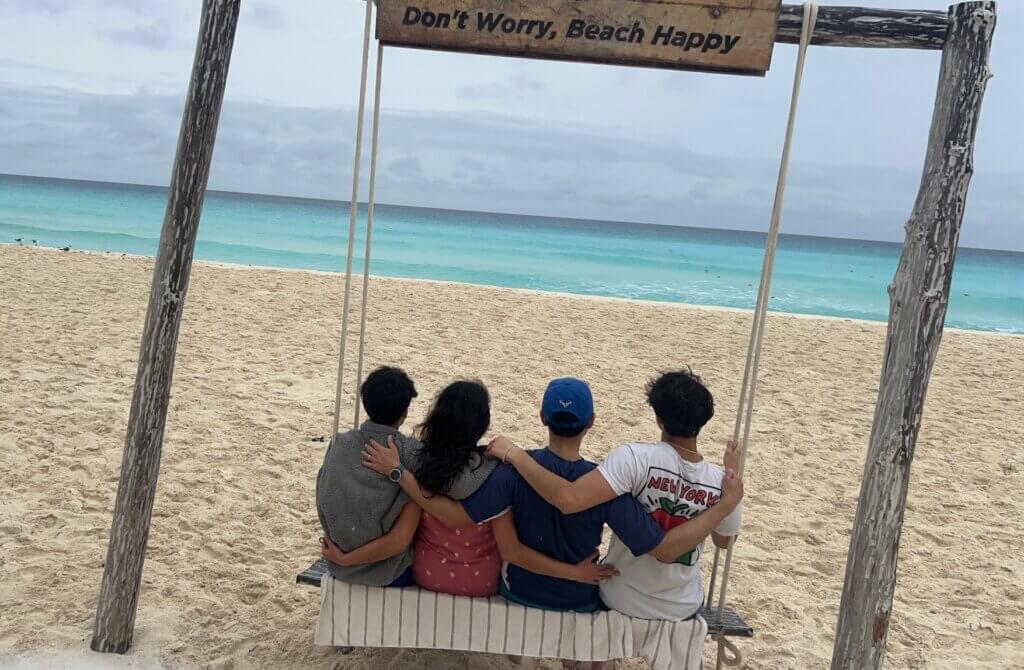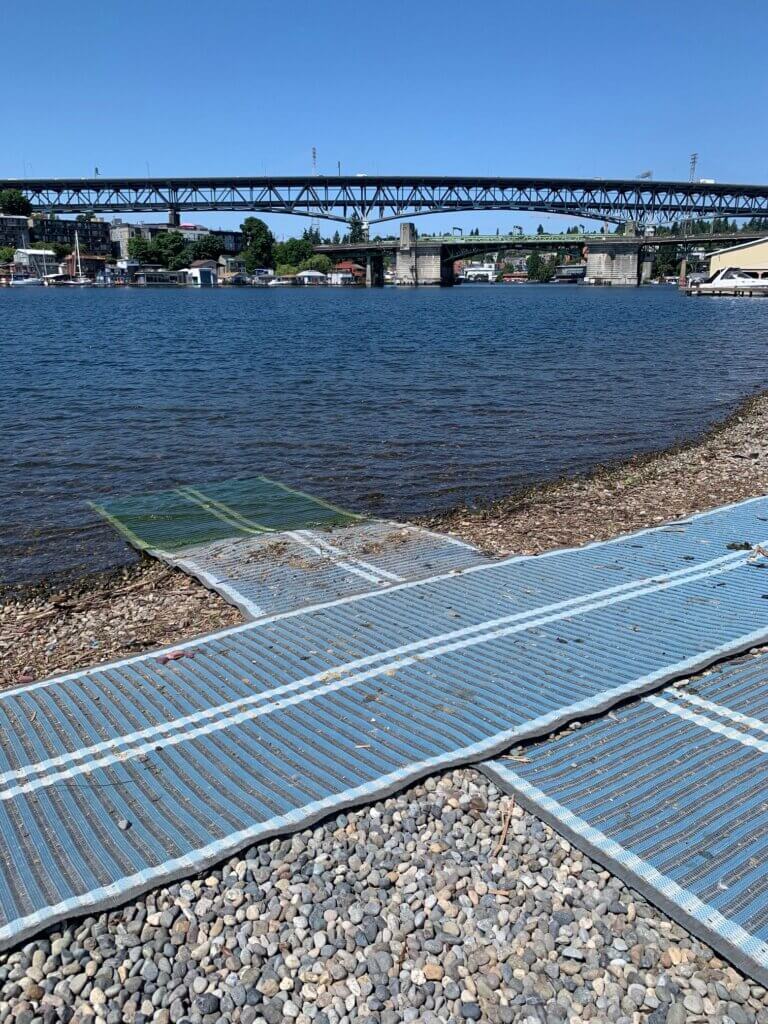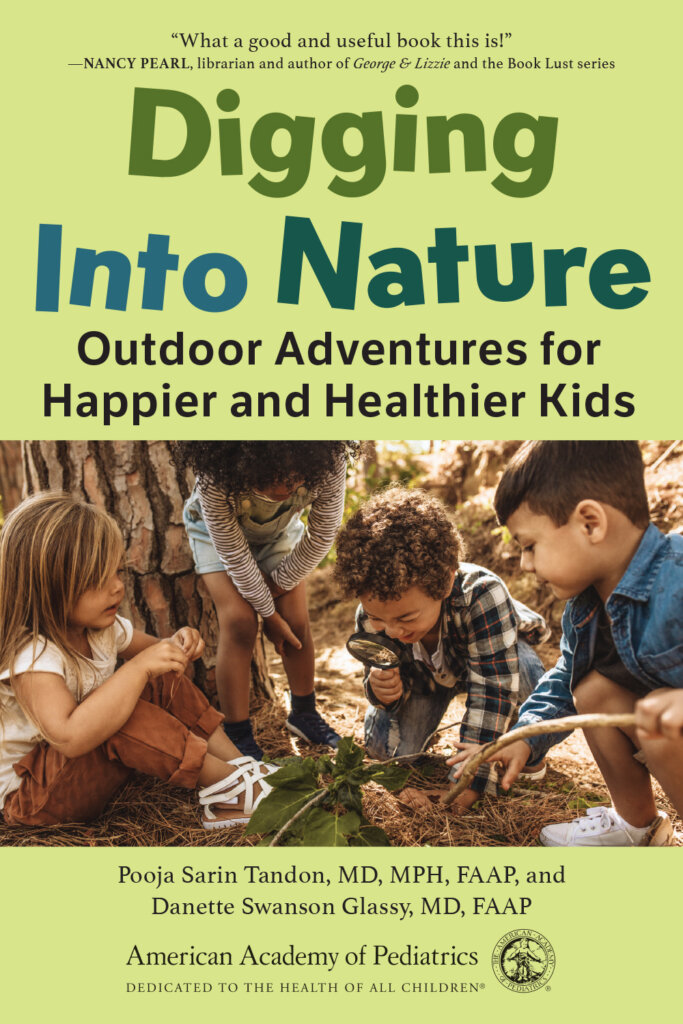Just like you, pediatricians have witnessed a shift in how children spend their time: more and more screen time, more and more (over) scheduled activities, and more parental stress, including concerns about all kinds of safety in public spaces. All of these forces have resulted in children growing up with less time outdoors, less nature time, and less free play compared to previous generations. These societal shifts have consequences for children’s health and well-being.
Medical research has shown that nature exploration and outdoor time improves the health and well-being of children. Even living in or going to school in settings with more surrounding nature is associated with better health. There is strong and credible evidence showing benefits for mental health—more happiness, reduced stress, improved cognitive capacity (including better behavior and improved concentration), plus a reduction in symptoms of ADHD, anxiety, and depression. For children who spend more time in nature, there is also a positive effect on physical health such as healthier weight, better fitness, and all of their associated benefits of disease prevention. Greener spaces and trees also promote better air quality and reduce high heat, which protects health as the climate changes. We also know that nature exploration at all ages promotes developmental milestones like motor development, language development, and for older children, the acquisition of essential life skills. Exploring the outdoors together with children also promotes socio-emotional skills and builds resilience. This improved relational health builds stronger mental health and acts as a buffer for the inevitable stressors in life. All of these physical, mental, developmental, and emotional benefits of being in nature improve the health and well-being of parents and caregivers as well as children. Parks and other public green spaces can serve as hubs for supporting intergroup connection and civic engagement, which are critical for helping communities thrive.

For all of these reasons, pediatricians are prescribing nature for patients and families. The recommendations go beyond just suggesting a number of daily minutes of outdoor time. Some pediatricians are even joining in these community-building efforts by hosting walks in a park with their patients and families. As parents ourselves, we know you want your child to play outdoors, but there are many barriers. We must brainstorm how our nature prescriptions can include practical access to nature and help families find ways to get around the barriers they face.
We often hear weather, such as heat, rain, cold temperatures, or snow, is a barrier. But we like this quote: there is no bad weather, only a need for better clothes. Families can manage weather with information on how to adapt to various conditions and safely be outdoors daily in all but the most extreme circumstances. For hot weather days, dressing appropriately, finding shade, and staying hydrated are key. For communities affected by wildfire smoke, learning how to monitor air quality is important. For wet or cold weather, sharing information about how to get low- or no-cost coats and gear can help. The growth of online marketplaces featuring children’s coats, rainsuits, and other gear has made this easier. Thrift shops and even community-gear libraries may offer access to ways to make you and your children more comfortable in all kinds of weather.
For all of us with busy lives, lack of time to get outside is a significant barrier to nature. Having nature time at child care, at school, and with other caregivers is a way to find extra outdoor time for your child. Make sure your school is offering a generous amount of recess and outdoor play, and help support the greening of schoolyards. We ask parents to talk with caregivers about making time for nature in a nearby park or green space. One of our favorite ways we suggest families find more time for nature is to take usual indoor activities outside. Why not have more picnics, art, music, or homework outside? Stay at school a few minutes more at the end of the day to enjoy the playground. Choose sports, extracurriculars, or summer camps that can be done outside. Walk or bike to run errands. Host playdates at a park or other green space around a library or place of worship.

Another way nature time is stolen from children is from overscheduling and excessive screen time. These are difficult parenting topics, but we are ready to support parents in finding balance. We encourage families to be very selective about any extra classes or sports as running from activity to activity can stress families and young bodies. We like to pass along the recommendations for families about limiting screen time and increasing green time!

Unfortunately, not every child has easy access to safe parks and green space in their neighborhood. In fact, one in three people in the United States does not have a park within a ten-minute walk from their home. Parks serving people of color as a majority are, on average, half as large and serve nearly five times more people as parks that serve a majority-white population. Parks serving primarily low-income households are, on average, four times smaller than parks that serve high-income households as a majority.
Access to nature for all children is a community responsibility. There are a growing number of groups that bring children and families to parks and natural areas, which may be a great option, especially for those that lack nearby nature access. Some of these groups focus on those that might have the least access such as children with disabilities, special health care needs, or children with minimal local park or green space access. Cities are investing in public transportation to natural areas, and there have been strategies to improve park amenities including staffing to address safety and programming to increase park activity. The green schoolyards movement is a very important part of this work particularly as a strategy for bringing nature into neighborhoods that face inequities in park access. These spaces need to be made available to the community after school hours as well as through shared use agreements. Communities must not only focus on K–12 schools. Our youngest need access to nature in both child care and preschool settings during their critical early childhood years, when fundamental developmental skills are just forming.
We believe that nature contact and outdoor time are fundamental human needs and lay the foundation in children for lifelong health and well-being. It is up to all of us to improve access to nature for all children.

“Digging Into Nature: Outdoor Adventures for Happier and Healthier Kids” – Pediatricians and nature experts Pooja Sarin Tandon and Danette Swanson Glassy make the convincing case that children and families will be happier, healthier, and more resilient when spending time in nature. They offer a wealth of suggestions for nature-based activities and suggestions for overcoming common challenges busy families face when trying to increase their outdoor time.
The authors address the importance of nature for children’s health at every age from infancy through adolescence and link their suggested activities to key developmental milestones. Digging Into Nature takes an inclusive approach, providing practical tips for parents of children with special health care needs, chronic health conditions, and cultural considerations to help all children reap the gifts that the great outdoors offer.



2 Responses
Thank you, Danette, Pooja and Ten Strands, for this really complete overview of the many health benefits for kids and families of spending time outdoors! This is a perfect companion to our growing California Campaign for Outdoor Learning! I know you two Docs are up in Washington but it would be so great to have your advice and thought partnership (and maybe a little of your rain!) down here in the Golden State. I know there is so much research literature supporting what you write about, but I’m wondering if there is a seminal publication or two that you find particularly convincing or that you cite over and over? Thank you for leading the way in this important work!
Thanks for this question, Craig. Dr. Tandon’s research team combed through thousands of research publications on nature and child health to pull together the studies done the best and with the strongest evidence. You can read their findings here: https://publications.aap.org/pediatrics/article/148/4/e2020049155/181269/Nature-and-Children-s-Health-A-Systematic-Review